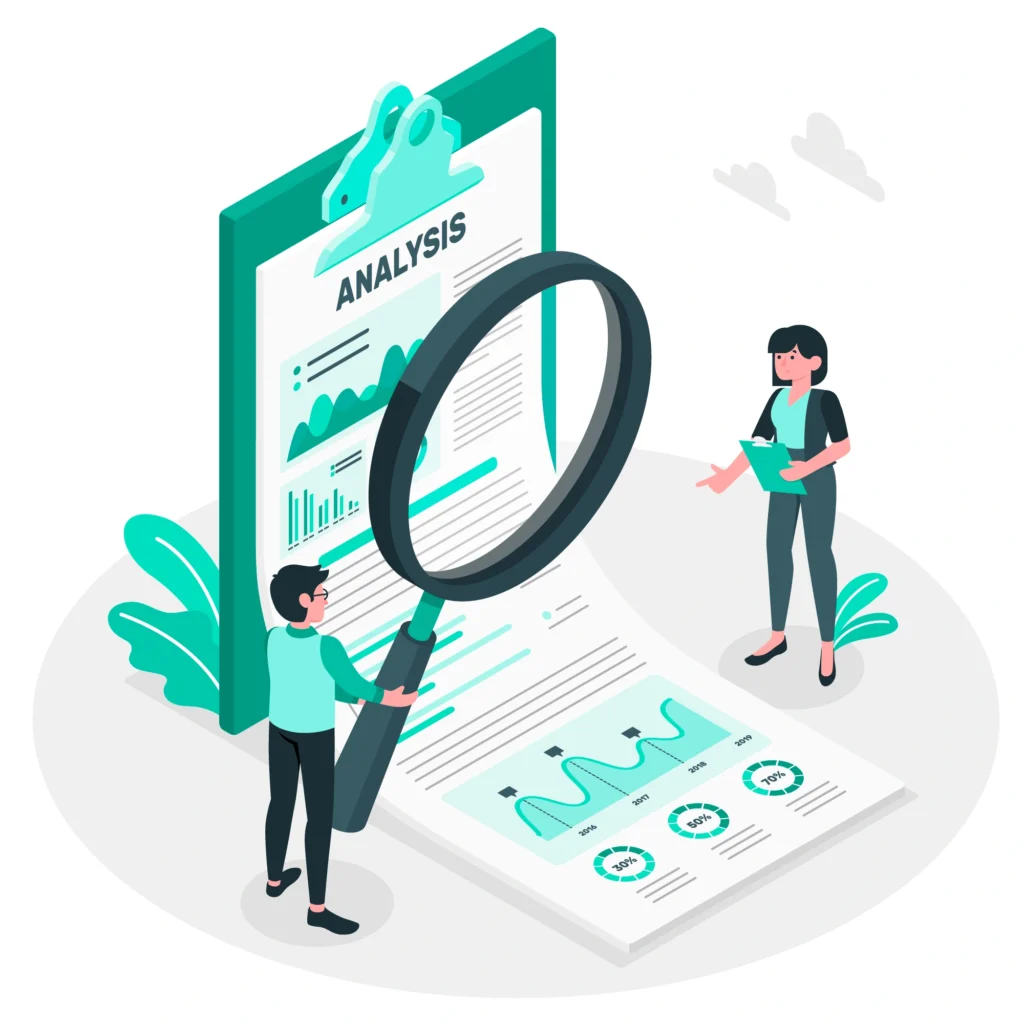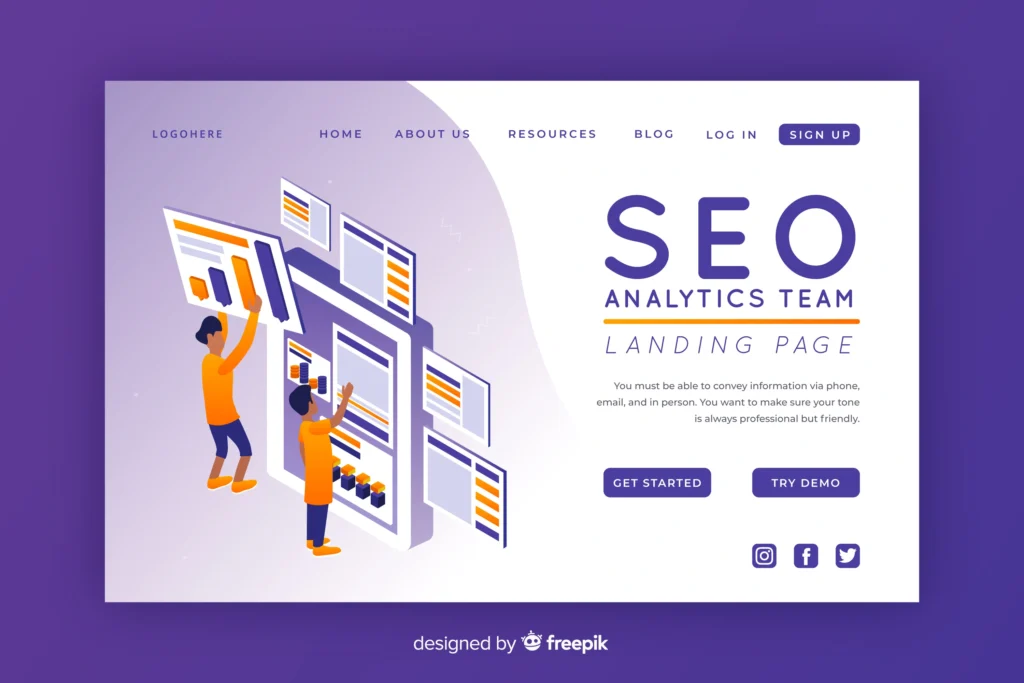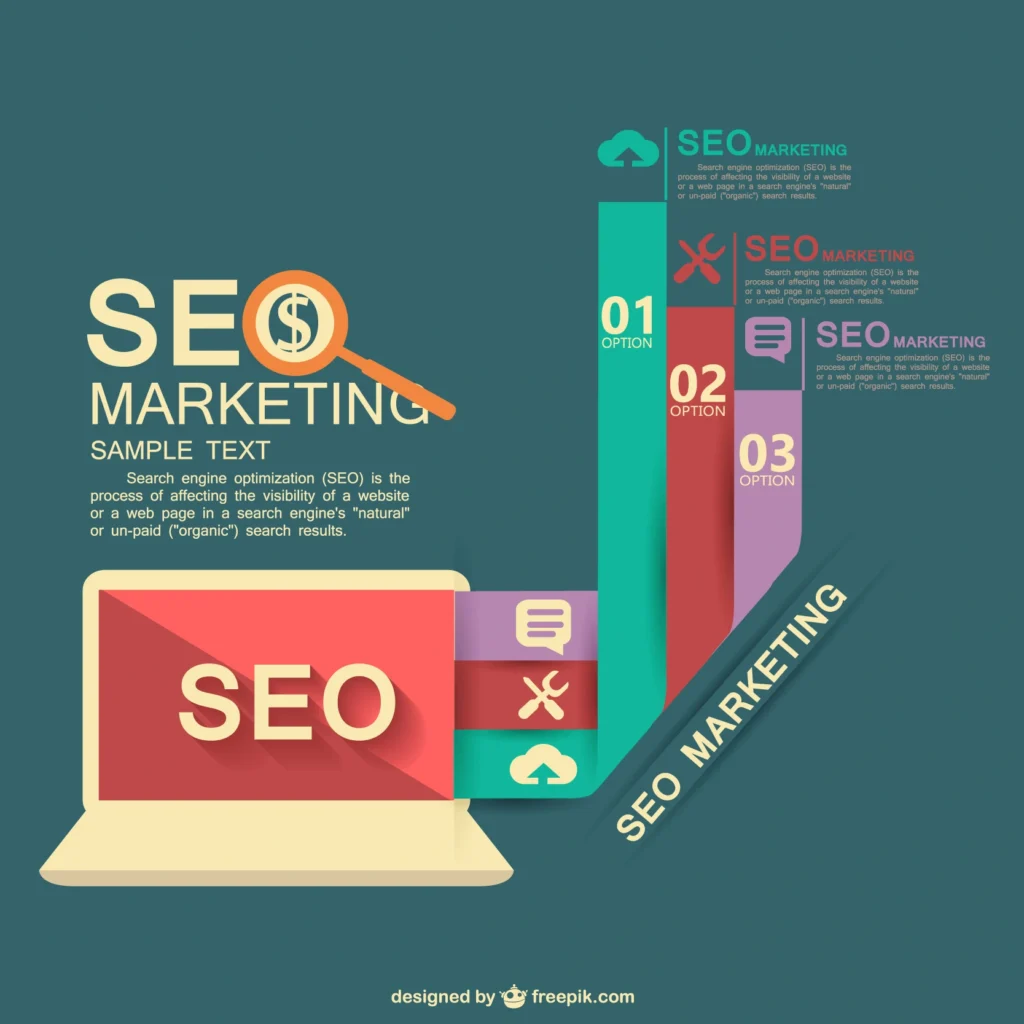SEO services help ensure that Google can easily find and understand your website. See it as cleaning your shop so customers can easily find what they want. On-page remains a dominant way to boost your website’s reach and conversions. So, regardless of your website type, such fixes are crucial for lasting success.
What is On-page SEO?
It’s like improving your website so search engines can easily crawl and index it. It includes enhancing your articles, source code, internal links, meta tags, and more. Unlike off-page methods such as backlinks, on-page SEO offers you complete control over your website. So, an on-page SEO optimization checklist becomes essential.
Why is it Important?
Search engines like Google use advanced algorithms to decide which website to show when you search for something. It helps search engines in several aspects, such as:
- It allows search engines to understand the content of your pages fully.
- It helps them know if your page is relevant to a user’s search query.
- It will enable search engines to rank your website and its content.
So, an on-site seo checklist is vital to pushing your website to the first page of SERPS.
The Complete On-Page SEO Checklist for 2025
This list contains steps to refine your website better for search engines. You can use these for a page-by-page audit or your entire website simultaneously.
Keyword Research
Innovative keyword research is the first step towards on-page optimization. Start by selecting a focus keyword per page which will serve as your content’s focus. Use tools like Keyword Planner and Semrush to find suitable keywords with better search volume. These simple steps help improve your search engine rankings.
Besides, you can also use secondary keywords along with primary keywords. Place them naturally in your blog to support your topic. You must also place primary keywords in key areas of your blog. Please include them in your page title, the first few sentences, URL, image alt text, meta descriptions, and page headings such as H1 and H2.
URL Structure
Ensure that the web address for all your pages is simple and easy to grasp. Our on-page optimization checklist recommends using short URLs that clearly describe your page and incorporate the main keyword.
Avoid using congested links with extra codes and symbols. In simple words, using a URL address like “yourwebsite.com/about-us” is much better than using “yourwebsite.com/page?id=123“.
Meta Tags and Descriptions
These snippets of text tell search engines what your page is about. It’s the main headline that people see first on search results. It must contain your target keywords and should not exceed 60 characters. Make them interesting enough so people get curious and click them. For example, “Soft-Baked Cookies | Fresh and Handmade.”
Meta descriptions, however, are short paragraphs below meta tags. Keep them under 160 characters. They should also include your primary keywords and provide a reason for people to visit your website. For example, our cookies are all soft and chewy inside but crisp and crunchy on the outside.
Header Tags
These consist of the headings and subheadings on your website. Your blog must include one main heading (H1) for your focus keyword and clearly describe the page.
Use shorter headings (H2) for key sections and even minor ones (H3) for subpoints. It helps search engines easily understand your page and makes it easier for users to read your content. It’s a key on-page SEO checklist factor.
Quality Content
Well-written content easily answers users’ queries while naturally featuring keywords. Use clear and straightforward language, ensuring it’s relevant to the topic and keeps the audience engaged. Use tools like Surfer SEO to avoid keyword stuffing.
Even though longer articles can sometimes perform better in search results, your website’s content must be helpful and well-written. Bullet points make it easier to go through your content. Update your content regularly to keep it fresh.
Image Enhancements
Fixing your website’s pictures can notably boost your loading speed and SEO. Give clear names to your images, like “organic-green-tea-packaging-2025.jpg” instead of “image1.jpg”. Alt text should also include relevant keywords but should sound natural.
Use compression tools like TinyPNG if your image files are big. It will help them load quickly on your website. Upload pictures in WebP format, which reduces photo size without compromising quality. It helps a lot, even though it sounds simple. Continue reading our on-page SEO checklist for more valuable tips.
Internal Linking
Internal links of your website improve crawlability, share link power, and keep your users engaged. A sound internal link system on your website helps search engines easily scan your pages and know what they are about. It also helps to keep your audience on your site longer.
Use clear words and phrases to describe linking pages. For example, instead of “click here,” you can use “see our guide to writing good titles.” Ensure all pages contain at least one internal link to prevent orphaned pages that search engines may ignore.
External Linking
Get external links from reputable websites like those containing .gov or .edu domains. It will help you gain trust and credibility in Google’s eyes. Make sure they open in a new window every time a user clicks on them. It will help to reduce bounce rates and improve engagement. Check if links point towards the right page to avoid problems.
Schema Markup
Schema markups are special labels added to your website’s content that help search engines better understand it. Use a specific labeling format called JSON-LD to tag items on your website, including products, reviews, and FAQS.
You can use Google’s Rich Results Test to check if these labels are set correctly and working as intended. It’s another key aspect of an on-page SEO checklist to boost your website.
Canonical Tags
Such tags prevent duplicate content issues by pinpointing the preferred page version. It’s great for online stores using slightly different versions of the same product pages. It’s a key area to consider if you want to make your website rank higher.
Social Sharing Integration
Adding social sharing buttons on your website notably boosts its reach and engagement. Allowing audiences to share content across different platforms helps your business reach more people and attract more clients. Place it where people can see it such as on top of your articles or as a floating sidebar on your website.
Ensure these buttons are easily visible and align with your site’s design. Choose those social media sites that your audience uses the most. Check if such additions slow down your website, which can affect it. It’s a vital part of seo on-page checklist to look for.
Multimedia Use
Written content only won’t help your website rank nowadays. Using multimedia like stats and videos will help your content rank today. Videos help your audience grasp tricky ideas with ease. Stats show complex data in a simple way that can be easily shared. GIFS are short, moving pictures that make learning more fun.
Plus, you can add audience polls and quizzes to make things more engaging. Using multimedia will help your website show higher on regular searches and help your business reach people looking for video tutorials or data.
Fix Broken Links
It’s a significant factor that affects a website’s online ranking. It can also annoy visitors and make your website seem unreliable. So every time someone clicks on your link, and it shows the page is unavailable, chances are high that the visitor will flee. And this is why fixing broken links on your website is essential.
Many special tools are available online that you can use to fix both your internal and external links. For internal broken links on your website, either link to the right website or remove it if unnecessary. For external broken links, either try to replace them with similar content or completely remove them.
Ensure to add a redirect link for a moved page so the old link works and sends visitors to the new page. It’s another key area of our on-page SEO checklist that helps attract customers. Fixing broken links helps reduce bounce rates and gain trust within the audience.
Show E-E-A-T
It stands for Experience, Expertise, Authority, and Trustworthiness. It shows your website’s credibility and is vital for brands dealing in health, money, or legal advice. You can share client stories and testimonials to highlight your experience.
Mention degrees or awards your business has earned on their website to show your expertise. Building authority means obtaining links and mentions on reputed websites and their articles.
You can gain trust by providing your contact info on your website to contact you easily and have clear privacy measures to ensure safe and secure payments. It is another core aspect to consider on our on-page SEO checklist to boost your site’s performance.
Voice Search Optimization
Many people use the voice feature to search on Google now. So, making your content more natural, like an everyday chat, is advised. You can also write casually and target longer phrases and keywords. Creating a FAQ section on your website is another great way, as it can directly answer voice search queries.
Give short and precise answers to feature yourself high on search results. At last, ensure your website loads quickly and is optimised for mobile. Such factors are impoprtanmt to rank high on voice search results. Refining your content for voice searches will help you appear higher on their search results and allow you to reach a wider audience.
Conclusion
SEO isn’t about using popular keywords only. It’s about creating an intuitive experience for both users and search engines. Following our on-page optimization checklist will help you refine your website to rank higher and perform much better.
You must pay attention to many things to perform well on search engines. It includes placing keywords correctly, enhancing social sharing, voice search refinements, and showcasing strong reliability signals. Every factor we covered on our on-page SEO audit checklist is crucial in building lasting success.
But remember that SEO isn’t a single task. It’s an ongoing process of improving and updating your website with the latest trends and updates. Use our on-page SEO checklist to improve your website and increase your brand’s clients and sales.
FAQs
Q1. What is on-page activity in SEO?
It refers to refining website el; elements to boost search engine rankings. It includes keyword research, content refinement, and improving page load speed.
Q2. What does on-page SEO include?
It is to improve website pages for better rankings and traffic. It includes content quality, keyword research, title tags, meta descriptions, header tags, and internal linking.
Q3. How to do proper on-page SEO?
An on-page SEO checklist includes using suitable keywords in titles, meta descriptions, headers, and content. Refine images with alt text and use clean URLs on your site.
Q4. On-page SEO activities list?
It includes keyword research, optimizing images, adding schema markup, using clear site structures, and showing E-E-A-T signals. Ensure to update your content regularly.
Also Read:












